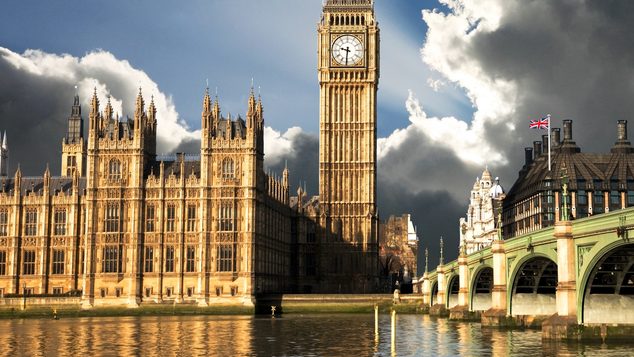Too Hot to Handle?
2021 was another year of healthy gains from risk assets, with the MSCI ACWI advancing 16.8% in US-dollar terms1 as it marched steadily higher over the course of the year. It was a year in which inflation continued to climb too, with year-on-year measures printing at levels not seen in at least a generation. The US consumer price index (CPI) for November 2021 rose by 6.8% year on year2 – its highest level since June 1982 – while the UK retail price index for the same month increased by 7.1% annually3 – the highest level since March 1991. In Germany, where CPI inflation averaged 1.3% between January 2010 and December 2019, December 2021 saw prices rise by 5.3% year on year.4 The continued acceleration of inflation has taken many in financial markets by surprise.
We have argued since early 2020 that the conditions necessary for higher inflation were falling into place. To be clear, this does not mean hyperinflation; it simply means that there is a growing probability that inflation will be higher than market participants have become accustomed to over the last 30 years, and particularly when compared with the decade that followed the 2007-8 global financial crisis.
Following the crisis, central banks were consistently unable to meet their inflation targets. This led to the leading lights of central banking – the US Federal Reserve (Fed) and the European Central Bank (ECB) – reviewing their policy frameworks. The objective was to equip themselves with the tools needed to bring about higher levels of inflation. However, it is doubtful that the prescriptions of these various policy reviews have in themselves contributed meaningfully to the recent acceleration of inflation to levels not seen in decades.
There is an unusual degree of consensus among economists that the acceleration of inflation is attributable to the pandemic and its aftermath: disrupted supply chains, reluctant workers, shortages and rising energy prices. It should also not be forgotten that governments pumped trillions of dollars in buying power to consumers courtesy of public-sector balance sheets. In this context, increases in prices might reasonably be considered all but inevitable. In the coming months it is likely that year-on-year measures of inflation will peak; however, even after the various national CPI statistics begin to decelerate, it is probable they will remain above central-bank targets. If this proves to be the case, monetary policymakers will find themselves facing a new problem: inflation running too hot.
While central bankers may have desired higher inflation, such an outcome does not always go down well with the electorate. The burden of inflation tends to disproportionally hurt those on lower incomes, and one of the lessons from inflationary eras of the past is that voters are less interested in causal responsibility than in forcing a change. In other words, when inflation becomes a problem, political incumbents are left holding the baby. Even if inflation does peak in the coming months, it is likely to stay at levels that ensure it remains a political issue. This, rather than the specific number thrown out by the respective national statistics office, may well be the key factor with respect to how inflation will affect the market outlook.
No Longer Transitory
Public polling has consistently revealed worries about price increases. In November, Morning Consult reported that 87% of Americans were “concerned about rising prices”. This burgeoning public anxiety has no doubt been a key factor behind the recent change of tack from the Fed. Prior to November, the Fed had consistently described elevated inflation as “transitory”, implying that rapid price gains would subside given time. As such, there was no hurry to tighten monetary policy, particularly given the threat that Covid-19 presented to the economy.
While the Fed has become incrementally more hawkish since the June 2021 Federal Open Market Committee (FOMC) meeting, the change in tone over the final two months of the year was remarkable. In November, “transitory” was ditched in favor of “persistent”, with Fed Chair Jerome Powell stating: “We have to be aware of the risks, particularly now the risk of significantly higher inflation. We see shortages and bottlenecks persisting into next year, well into next year. We see higher inflation persisting, and we have to be in position to address that risk should it create a threat of more persistent, longer-term inflation.“
We have to be aware of the risks, particularly now the risk of significantly higher inflation. We see shortages and bottlenecks persisting into next year, well into next year. We see higher inflation persisting, and we have to be in position to address that risk should it create a threat of more persistent, longer-term inflation.
Jerome Powell, Fed Chair
At the December FOMC meeting the Fed announced an accelerated tapering of its monthly asset purchases from US$15bn to US$30bn a month, and indicated that interest-rate hikes would begin in 2022. The new year began with the Fed going even further, indicating that the process of balance-sheet reduction by way of quantitative tightening could begin later in the year. In summary, over the final quarter of the year the Fed made substantial hawkish strides. Should it be as good as its words, monetary policy will tighten considerably in 2022.
The intention is to curb the inflationary pressures percolating through the CPI basket. There are four key drivers of inflation: supply of money, demand for money, supply of goods and services, and demand for goods and services. The last year has seen a perfect storm, as all four factors have contributed to higher consumer price inflation.
Central banks do not have direct control of all these factors. The Fed can hardly be blamed for recent supply disruptions, for example. However, it has at least some control over the other three factors. In particular, it influences growth in the money supply – both directly, through asset purchases, and indirectly, through short-rate policy and bank regulations. Alongside fiscal agents, the Fed can also stimulate demand for goods by mainlining money to consumers – potentially resulting in a mismatch between available supply and demand.
If the Fed brings to an end its money-creation activities and begins the process of hiking interest rates, it will incrementally serve to curtail inflationary pressures. Such pressures are also likely to reduce as supply disruption further eases, assuming economies are able to reopen.

Light at the End of the Tunnel
When the Omicron variant was first identified in South Africa, many were concerned that it constituted another blow in the battle against Covid-19. Early evidence that it was more contagious, combined with fears that it would be resistant to existing vaccines, raised the prospect of a return to widespread lockdowns in 2022. Fortunately, it has become increasingly clear that the variant is considerably less severe than prior variants, nor is it resistant to existing vaccines. While case numbers have exploded globally, the link between cases, hospitalizations and mortality appears to have been weakened. This has led to a shift in how many governments are tackling the virus.
There is a growing political will to avoid a return to lockdowns and press ahead with reopening. In England, one of the countries where Omicron first took hold, the government has resisted further restrictions, arguing that the point has been reached where the country needs to learn to live alongside the virus. The US is following a similar path. Attitudes appear to be shifting on the European continent too. After the Netherlands implemented restrictions in November, German politicians have indicated that there will not be a return to lockdowns, despite a record spike in cases.
Absent the emergence of a more virulent strain that becomes dominant, it is likely that we are on the pathway to the virus becoming endemic. Omicron is perhaps the greatest hope yet that we are near the ‘beginning of the end’ of the detrimental impact of Covid-19 on individual lives and economies.
From Public to Private
If we are entering the latter stages of the pandemic phase of Covid-19, it is probable that governments will continue to withdraw monetary and fiscal support. But after seven quarters of unprecedented monetary and fiscal easing at the global level, it is unlikely that this will be without consequence for markets and economies. One of the key issues for the coming year will therefore be whether the private sector can step in as the marginal source of liquidity as monetary and fiscal policy is tightened. However, even if it does, the nature of this funding will be different.
The dominant source of private-sector liquidity is commercial-bank lending: as commercial banks lend they create liquidity. If commercial-bank lending fails to accelerate and the Fed continues to tighten monetary policy, it is highly likely that the tightening of liquidity in 2022 will be consistent with a sharp slowdown in nominal growth and rising systemic credit risk. Conversely, if commercial-bank lending accelerates it will serve to offset the tightening of liquidity orchestrated by the Fed, supporting nominal growth and ensuring systemic credit risk remains benign.
The indications over the final quarter of 2022 were promising. US commercial-bank credit has begun to pick up and the growth rate accelerate. The Fed’s Senior Loan Officer Survey indicates that banks’ willingness to supply credit is increasing and that banks are seeing an increase in demand for credit.5 This is true across companies and consumers and supports the view that bank credit will continue to expand into 2022. Of course, a continued acceleration of bank lending is predicated on a continued reopening of the economy.

The Return of the Dual Mandate
A continued acceleration of commercial-bank lending would support nominal growth through 2022. It would also contribute to a continued percolation of inflationary pressures by supporting nominal demand. If inflation remains elevated, it is likely to remain a political issue. This has important implications for the Fed, as for the first time since the 1980s the FOMC will be grappling with both objectives of its dual mandate.
The Federal Reserve Act mandates that the Fed should conduct monetary policy so as to promote maximum employment and stable prices. For much of the last three decades, low and stable measures of inflation have meant that price stability has rarely if ever been a binding constraint on Fed policy. Over this period, the Fed has been free to focus on maximizing employment, which has resulted in an increasingly asymmetric approach to monetary policy: aggressively ease in response to a downturn and belatedly tighten once the recovery is established. This approach to monetary policy has been a necessary condition in the massive expansion of balance-sheet capacity over the same period that has underpinned the structural inflation of asset prices, as we outlined last quarter.
There is a commonly held view in financial markets that Fed policy is intended to support asset prices. This view is not without reason: on a number of occasions following the global financial crisis (such as in February 2016 and December 2018), sharp declines in US equities and a widening of credit spreads have prompted the Fed to pivot swiftly from hawkish to dovish. As such, it is widely held that that the Fed has a third unofficial mandate: accommodative ‘financial conditions’ – or supporting asset prices – colloquially known as the ‘Fed put’.
The Fed has been able to implement policies that have supported asset prices because they have been consistent with attaining full employment and price stability, at least according to the theories that dominate central banking. However, if the zeitgeist has shifted from tackling inequality to tackling inflation, supporting financial conditions through easy monetary policy will no longer be consistent with half of the dual mandate. If inflation remains a political issue, the hurdle to implement policies that have historically been supportive of asset prices is likely to be much higher. No longer will the Fed be free to do ever more – the liquidity punchbowl may indeed be taken away or at the very least withdrawn until partygoers have had the chance to sober up.
If the zeitgeist shifts to tackling inflation, the Fed will be forced to choose on the next occasion there is a decline in risk assets: reduce liquidity in the hope of a lagged impact on inflation, or expand liquidity in order to support asset prices. If the economy is doing OK (at least at first), it is likely to choose the former.
A Sign of Things to Come?
As outlined above, the last six months have seen a transition from a hyper-accommodative liquidity environment to a more normalized one (albeit still far from normal). This has left its mark on financial-asset prices. Speculative areas of the market such as special purpose acquisition companies, initial public offerings, profitless tech and cryptocurrencies have steadily come under increasing pressure. Conversely, the market has come to reward quality businesses with relative outperformance. This appears set to continue as long as monetary policy is tightened.
To be clear, quality is not the preserve of those businesses traditionally seen as defensive; cyclical industries such as banks and oil performed strongly over the course of 2021. As the economy continues to recover and interest rates rise, short-duration equities are likely to continue to benefit while long-duration equities remain vulnerable.
This is an issue for investors not just in 2022 but over the longer term. Thanks to 30 years of disinflation, when it comes to tail events, investors are almost myopically focused on deflationary busts. The risk that inflation can pose to portfolios has been all but forgotten. Beyond the short-term vacillations of inflation, the observed transition from the supply-side economic policies that have underpinned three decades of disinflation to demand-side economics increases the probability of a world of higher inflation. Investors will increasingly have to grapple with two opposing tail risks: deflationary busts and inflationary busts.
The transition from supply-side economics to demand-side economics will not be linear, and there is likely to be a tension between ‘the way things are’ and ‘the way things should be’. When inflation is elevated and accelerating there will be pressure for a return to orthodoxy, but when economies slow and the specter of deflation returns, calls for new ideas will grow louder. In our view, an open mind about what this means for financial markets is therefore imperative. History may indeed rhyme, but the overture of the last 30 years is increasingly likely to be a poor predictor of the next verse.

1 Source: Bloomberg, January 2022.
2 Source: US Bureau of Labor Statistics, December 10, 2021.
3 Source: UK Office for National Statistics, December 15, 2021.
4 Source: Federal Statistical Office of Germany, January 6, 2022.
5 https://www.federalreserve.gov/data/sloos/sloos-202110.htm
This is a financial promotion and has been issued by Newton Investment Management Ltd. Material in this publication is for general information only. The opinions expressed in this document are those of Newton and should not be construed as investment advice or recommendations for any purchase or sale of any specific security or commodity. Certain information contained herein is based on outside sources believed to be reliable, but its accuracy is not guaranteed. Any reference to a specific security, country or sector should not be construed as a recommendation to buy or sell investments in those countries or sectors. Please note that portfolio holdings and positioning are subject to change without notice.
‘Newton’ and/or ‘Newton Investment Management’ is a corporate brand which refers to the following group of affiliated companies: Newton Investment Management Limited (NIM) and Newton Investment Management North America LLC (NIMNA). NIMNA was established in 2021 and is comprised of the equity and multi-asset teams from an affiliate, Mellon Investments Corporation. In the United Kingdom, NIM is authorised and regulated by the Financial Conduct Authority (‘FCA’), 12 Endeavour Square, London, E20 1JN, in the conduct of investment business. Registered in England no. 1371973. NIM and NIMNA are both registered as investment advisors with the Securities & Exchange Commission (‘SEC’) to offer investment advisory services in the United States. NIM’s investment business in the United States is described in Form ADV, Part 1 and 2, which can be obtained from the SEC.gov website or obtained upon request. Both firms are indirect subsidiaries of The Bank of New York Mellon Corporation (‘BNY Mellon’). Newton provides discretionary and non-discretionary investment advice to institutional clients, including US and global pension funds, sovereign wealth funds, central banks, endowments, foundations, insurance companies, registered mutual funds, other pooled investment vehicles and other institutions. Its current office locations include London, Boston, New York and San Francisco. This document may not be used for the purpose of an offer or solicitation in any jurisdiction or in any circumstances in which such offer or solicitation is unlawful or not authorised. Certain information contained herein is based on outside sources believed to be reliable, but their accuracy is not guaranteed. The opinions expressed in this document are those of Newton and should not be construed as investment advice. Personnel of certain of our BNY Mellon affiliates may act as: (i) registered representatives of BNY Mellon Securities Corporation (in its capacity as a registered broker-dealer) to offer securities, (ii) officers of the Bank of New York Mellon (a New York chartered bank) to offer bank-maintained collective investment funds and (iii) associated persons of BNYMSC (in its capacity as a registered investment adviser) to offer separately managed accounts managed by BNY Mellon Investment Management firms.
In Canada, Newton Investment Management Limited is availing itself of the International Adviser Exemption (IAE) in the following Provinces: Alberta, British Columbia, Ontario and Quebec and the foreign commodity trading advisor exemption in Ontario. The IAE is in compliance with National Instrument 31-103, Registration Requirements, Exemptions and Ongoing Registrant Obligations.




